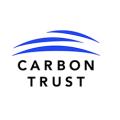This article was updated on 15th May 2019 to reflect changes to the Science Based Targets initiative (SBTi) published in April 2019.
Why are these new changes being introduced?
The Paris Agreement set out an international ambition to hold the increase in global average temperature well below 2C above pre-industrial levels, and to pursue efforts to limit this to 1.5C. However, at the time the Paris Agreement was signed only limited information was available on what a pathway to 1.5C would look like, and the relative differences in impact between 2C and 1.5C were not well understood.
In response to this, in October 2018 the Intergovernmental Panel on Climate Change (IPCC) published a Special Report on Global Warming of 1.5C, gathering together the best available science on the subject. This report warns of severe consequences from a failure to prevent global warming exceeding 1.5C, as well as presenting a number of new emissions scenarios that would keep temperatures within this boundary.
Following the release of this report, the SBTi has introduced this major new update that encourages companies to set carbon reduction targets consistent with the higher ambition aim of the Paris Agreement.
What has changed?
The main change in this update is that the minimum required level of ambition for science-based targets has been changed from a 2C pathway to a well below 2C pathway. This means companies now need to develop science-based targets aligned to either a well below 2C or a 1.5C pathway.
Alongside this, the SBTi has released a series of new technical resources for companies looking to set targets:
- Foundations of Science-based Targets: A technical explanation of the approach taken by the SBTi to develop carbon reduction pathways aligned with a well below 2C and a 1.5C
- Science-based Target Setting Manual: An overall guidance document for companies starting to consider science-based targets.
- Criteria and Recommendations: The detailed criteria used for the SBTi validation of science-based targets.
- Target Validation Protocol: A technical document giving more detail of how science-based target submitted to the SBTi are assessed for validation
- Tools: Including an update of the existing Excel-based tool, which now enables companies to set targets a well below 2C pathway or a 1.5C pathway.
What does "well below 2C actually mean?
The terminology well below is commonly understood to be equivalent to what the IPCC defines as resulting in a ‘likely chance’ of keeping temperature rise below a certain limit. Well below 2C is therefore equivalent to a 66% probability of keeping temperature rise below 2C. This also equates to a 50% probability of keeping warming to 1.75C, which is aligned to the Beyond 2C Scenario (B2DS) published in the latest International Energy Agency (IEA) Energy Technology Perspectives report.
When will the changes come into force?
The new validation criteria will come into force on 15 October 2019.
What do the changes mean for a company that has not yet submitted its science-based target to the SBTi for approval?
For a company looking to submit its target for approval after 15 October 2019, the target will only be accepted if it is aligned to a well below 2C or a 1.5C scenario. Targets consistent with just 2C will no longer be approved.
If a company has already made a commitment to set a science-based target, and is looking to submit its target before 15 October 2019, a target aligned to 2C will be acceptable. However, recommended best practice is to develop targets to align with a well below 2C or 1.5C pathway before submitting to the SBTi. This will demonstrate leadership on climate change. It will also avoid the requirement for a more ambitious target to be calculated at a future date.
Will this impact companies that already have an approved 2C science-based target?
Under existing SBTi validation criteria, companies are already expected to review their targets every year, and to re-assess their validity – and update them if necessary – at least once every five years. Companies that currently have an approved 2C target should therefore be required to update their target to be consistent with a 1.5C or well below 2C pathway within five years of the date they received approval of their original target.
Targets aligned with a well below 2C or 1.5C scenario will also become mandatory in 2025. This means that all approved science-based targets will need to be aligned with a 1.5C or well below 2C pathway at this point.
How will more ambitious targets be communicated?
Until now, approved targets were simply recognised as being science-based by the SBTi. From 15 October 2019, the level of ambition of all existing and new targets will be published on the SBTi website, and classified under one of three categories: 1.5C; well below 2C; and 2C.
What about targets for scope 3 emissions?
The SBTi requires companies to set ambitious scope 3 targets in addition to science-based targets for scope 1 and 2 if scope 3 makes up more than 40% of total scope 1, 2 and 3 emissions. As happened previously, there are a number of ways in which ambitious targets are defined, but if a company is setting absolute targets, these only need to align with a 2C scenario. Targets aligned with a well below 2C scenario are not required at this stage. However, it is likely that increased ambition will be required in the future, so we would encourage companies to consider alignment to a well below 2C or 1.5C at this stage.
Where can I get support to set a science-based target?
The Carbon Trust has experience working with over 50 companies to help them set science-based targets, across multiple industries. Support can be provided at any stage of the process, including initial scope 1 and 2 target setting, the development of scope 3 targets, and submission of targets to the SBTi for approval.
Find out more
Get in touch for strategic advice



